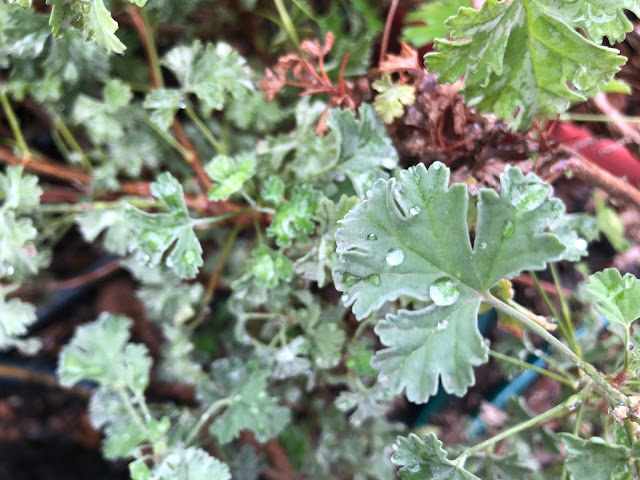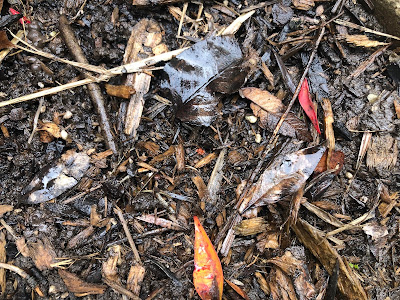
Succulents and other sensitive plants need storm protection

|
|
Pelargoniums, such as these scented geraniums, are among the types of plants
that are vulnerable to cold rains. Begonias, succulents and true geraniums are others. Protect or move them before the storm hits. (Photo: Kathy Morrison)
|
Santa is going to get soggy. So are your succulents.
Whoever asked for rain this Christmas is getting their wish fulfilled early. According to the National Weather Service, Sacramento is going to get a lot of moisture this week. Starting Tuesday, precipitation is in the forecast for seven consecutive days. Coincidentally, Tuesday is also the first day of winter.
These storms will start out easy, with hit or miss rain on Tuesday and Wednesday. The weather service estimates Sacramento will receive ½ to 1 inch total for those two days.
But Thursday through Saturday, Christmas Day, should see heavier rain with another 2 inches in the forecast. In addition, daytime temperatures are going to be chilly – mostly in the 40s. That’s well below this week’s average high of 56 degrees.
Prepare for these rainy days ahead:
* Clear any debris such as fallen leaves and twigs from storm drains and rain gutters.
* Watch out for spots where water may pool around your home – especially the foundation. Add extensions to downspouts so water is directed away from the house.
* Succulents can’t take a lot of cold water, and this rain will feel frigid. Cold or warm, too much rain and succulents will rot. Move potted plants to protected spots under eaves or on a covered patio.
* The same advice goes for begonias and geraniums/pelargoniums. If possible, give them some protection from these cold and soggy conditions.
* Remove any saucers under pots. Otherwise, roots may rot from standing in water.
* Protect holiday plants such as poinsettias and cyclamens. Although they need to be kept watered, they'll prefer a dry and bright spot indoors to the wet and cold outside.

|
| Soggy soil is bad for planting. Don't walk on it, either. |
* Avoid walking on very wet soil. It will compact, squeezing out its vital air pockets.
* Make a note of where water naturally flows in your landscape. You may want to create a rain garden and capture water from future storms.
Comments
0 comments have been posted.Sacramento Digs Gardening to your inbox.
Sites We Like
Garden Checklist for week of July 21
Your garden needs you!
* Keep your vegetable garden watered, mulched and weeded. Water before 8 a.m. to reduce the chance of fungal infection and to conserve moisture.
* Feed vegetable plants bone meal, rock phosphate or other fertilizers high in phosphate to stimulate more blooms and fruiting. (But wait until daily high temperatures drop out of the 100s.)
* Don’t let tomatoes wilt or dry out completely. Give tomatoes a deep watering two to three times a week.
* Harvest vegetables promptly to encourage plants to produce more. Squash especially tends to grow rapidly in hot weather. Keep an eye on zucchini.
* Pinch back chrysanthemums for bushy plants and more flowers in September.
* Remove spent flowers from roses, daylilies and other bloomers as they finish flowering.
* Pinch off blooms from basil so the plant will grow more leaves.
* Cut back lavender after flowering to promote a second bloom.
* It's not too late to add a splash of color. Plant petunias, snapdragons, zinnias and marigolds.
* From seed, plant corn, pumpkins, radishes, winter squash and sunflowers.